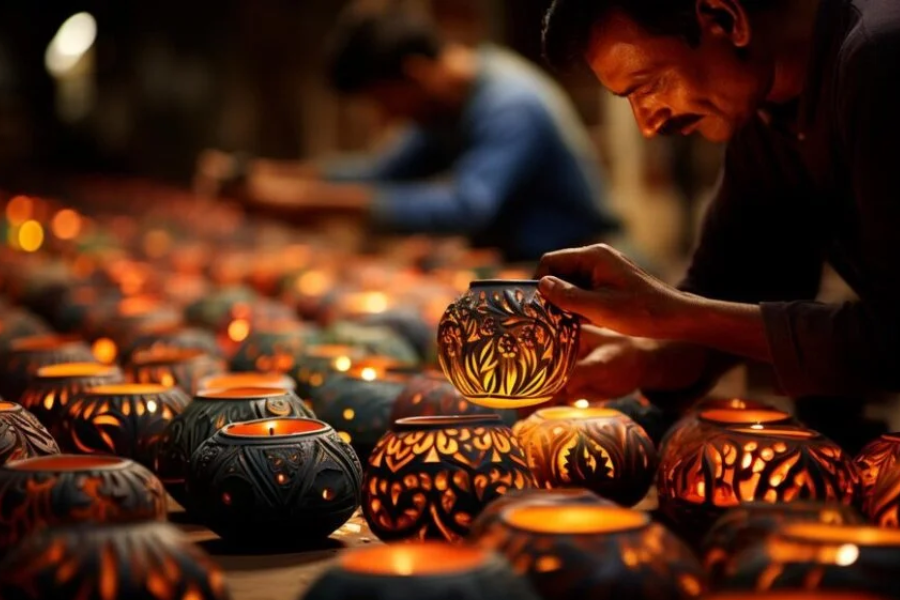Kari Kinnaslapi is a term that holds a unique place in the cultural and linguistic heritage of Finland. While it may not be a household name in many parts of the world, it carries a deep significance for those who are familiar with the traditions of Finnish language and customs. In this blog post, we’ll explore the meaning of Kari Kinnaslapi, its historical and cultural roots, and its place in modern society. Along the way, we’ll highlight key facts and insights to give you a comprehensive understanding of this term and its relevance.
What is Kari Kinnaslapi?
Before diving into the background and cultural significance of Kari Kinnaslapi, let’s first define the term.
Kari Kinnaslapi is often used in the context of Finnish folklore, mythology, and language, with variations in meaning depending on regional dialects and historical contexts. At its core, Kari Kinnaslapi refers to a type of traditional artifact or object, often associated with Finnish rural life and customs. The term itself may have evolved over time, but its roots can be traced back to ancient Finnish traditions.
In some interpretations, “Kari” can be associated with a rock or small rocky island, often found in the Finnish archipelago, while “Kinnaslapi” may refer to an implement or tool used for specific practical purposes in Finnish households or agriculture.
This dual nature of the term reflects a blend of practicality and mythology, both of which are deeply woven into the fabric of Finnish culture.
The Historical and Cultural Context of Kari Kinnaslapi
The Role of Objects in Finnish Folklore
The Finnish culture is rich in mythology and folklore, where objects, tools, and everyday items often take on symbolic meanings. In many cases, these objects are believed to have protective or spiritual significance. Kari Kinnaslapi is no exception to this tradition.
In rural Finland, objects like Kari Kinnaslapi might have been used in everyday activities, such as farming, fishing, or domestic tasks, while also carrying a deeper spiritual or cultural significance. Tools and implements used for survival often doubled as symbols of connection to the land, the environment, and the divine. The people of Finland traditionally saw themselves as part of a delicate balance between nature and humankind, and objects like the Kinnaslapi would serve as reminders of that relationship.
Finnish Language and Its Evolving Terminology
The Finnish language, known for its complex structure and rich vocabulary, is an essential aspect of understanding the significance of Kari Kinnaslapi. Finnish is a language that has historically been shaped by the country’s geography and culture, incorporating elements from various neighboring languages, including Swedish and Russian.
The term Kari Kinnaslapi itself is likely a blend of older Finnish words that have changed in meaning over centuries. It is possible that the term originated in ancient times when people spoke different dialects or languages, but over time, it became a part of the vernacular in certain regions of Finland. While its exact origins remain somewhat unclear, its usage in rural Finnish communities can be traced back several centuries.
Kari Kinnaslapi and Finnish Rural Life
In Finland, rural life has long been central to the identity of the nation. The vast forests, expansive lakes, and rugged terrain formed the backdrop for the development of many Finnish traditions. Kari Kinnaslapi, like other objects tied to rural life, was an integral part of day-to-day activities. Whether it was used as a tool or a symbolic item, it played a role in connecting people to their land and their ancestors.
For example, in a farming community, the Kinnaslapi could have been an implement used in crop harvesting or livestock management. These tools were made with great care, reflecting the knowledge passed down through generations. Many of these implements were not only practical but also imbued with symbolic meaning, believed to ensure good harvests or protect the home.
The Significance of Kari Kinnaslapi in Finnish Culture
Symbolism in Finnish Traditions
In Finnish culture, symbols are an important part of everyday life. From ancient myths to modern customs, symbols represent deeper meanings that are tied to the beliefs, values, and worldview of the people. Kari Kinnaslapi could be considered a symbol of connection to the earth, a representation of self-sufficiency, and an emblem of the perseverance needed to survive in Finland’s challenging natural environment.
In some traditions, it’s believed that certain objects or implements could help protect the household from evil spirits or misfortune. While the exact nature of Kari Kinnaslapi’s role in these practices is unclear, it is likely that objects like these were used in rituals to ensure the prosperity and safety of families living in Finland’s rural areas.
The Role of Folklore in Preserving Traditions
Much of what we know about Kari Kinnaslapi today is preserved through folklore. Finnish folklore is rich with stories of mystical beings, spirits, and magical objects, and the term Kinnaslapi may have once been associated with these beliefs. The role of storytelling in preserving cultural knowledge is important in Finland, where oral traditions have been passed down for generations.
Folklore often plays a central role in transmitting knowledge about objects, practices, and customs. It’s not uncommon for items like the Kinnaslapi to be mentioned in traditional songs, stories, and legends, making them part of a collective cultural memory. Through storytelling, each generation learns about the past and gains insight into the beliefs, values, and experiences of their ancestors.
Modern-Day Relevance of Kari Kinnaslapi
Rediscovery of Finnish Heritage
In recent years, there has been a renewed interest in Finland’s traditional arts and crafts, with people seeking to reconnect with their cultural heritage. As the world becomes more globalized, there is a growing appreciation for local customs and the preservation of indigenous traditions. Kari Kinnaslapi, as a symbol of Finnish heritage, could be part of this larger movement to rediscover and celebrate Finland’s cultural roots.
This trend is evident in the growing popularity of folk festivals, traditional handicrafts, and Finnish language courses. People today are increasingly interested in learning more about the objects, tools, and customs that once defined rural Finnish life. The Kari Kinnaslapi could serve as a reminder of the importance of preserving these traditions, even in a rapidly changing world.
Kari Kinnaslapi and Finnish Tourism
Another area where Kari Kinnaslapi’s cultural significance has become more prominent is in Finnish tourism. Finland is known for its stunning natural landscapes, outdoor activities, and rich cultural heritage. As more people visit the country, there is growing interest in learning about Finnish traditions and customs. Artifacts like Kari Kinnaslapi, especially those that reflect the country’s history, have become part of this narrative.
Many visitors to Finland seek to experience the country’s folklore, customs, and natural beauty firsthand. Museums and cultural sites across Finland showcase objects like the Kinnaslapi, giving tourists a chance to understand how such items were used and what they represent in Finnish culture.
The Impact of Kari Kinnaslapi on Finnish Identity
A Link to Finland’s Agricultural Past
The Kari Kinnaslapi is a testament to Finland’s agricultural past. For centuries, the Finnish people lived off the land, relying on farming and fishing for their livelihoods. The tools and objects they used, such as the Kinnaslapi, were not only practical but also symbolic of the hardworking nature of the Finnish people.
Today, as Finland has modernized and urbanized, the connection to its agricultural roots remains an important part of the national identity. Objects like the Kinnaslapi serve as reminders of a time when rural life was the backbone of the nation and a symbol of the resilience and resourcefulness that defined the people of Finland.
Kari Kinnaslapi in the Context of Finnish Language and Nationalism
Language plays a significant role in shaping a nation’s identity, and the Finnish language has been central to the rise of Finnish nationalism. In the 19th and early 20th centuries, the Finnish language was promoted as a symbol of national pride and independence. The preservation of terms like Kari Kinnaslapi, along with other elements of Finnish culture, helped strengthen the national consciousness.
As Finland gained independence in 1917, the country began to more deeply explore its cultural heritage. Items like the Kari Kinnaslapi were not just practical tools—they were part of a larger cultural movement that sought to preserve the nation’s identity.
Conclusion
Kari Kinnaslapi is more than just a term—it represents a deep connection to Finnish culture, history, and traditions. Rooted in Finnish folklore and rural life, it serves as a symbol of self-sufficiency, resilience, and the unique heritage of Finland. While its exact origins may remain somewhat mysterious, its significance in Finnish language, mythology, and daily life cannot be overlooked. As Finland continues to evolve in the modern world, the appreciation and rediscovery of cultural artifacts like Kari Kinnaslapi help keep the nation’s rich traditions alive for future generations.
FAQs
1. What does Kari Kinnaslapi mean?
Kari Kinnaslapi is a term associated with Finnish folklore, language, and rural traditions. It may refer to an object or implement used in Finnish households or agriculture, with potential symbolic or cultural significance.
2. Is Kari Kinnaslapi a widely recognized term in Finland?
While Kari Kinnaslapi is not a commonly known term in mainstream Finnish culture, it holds significance in certain regional dialects and historical contexts related to Finnish traditions.
3. What role does Kari Kinnaslapi play in Finnish folklore?
Like many objects in Finnish folklore, Kari Kinnaslapi is believed to have had both practical and symbolic uses. It may have been associated with protection, prosperity, or ancestral traditions, as is common in Finnish mythology.
4. How does Kari Kinnaslapi connect to Finland’s history?
Finland’s history is deeply tied to agriculture, rural life, and a strong bond with nature. Objects like Kari Kinnaslapi reflect the resourcefulness of Finnish people and their reliance on tools that helped them navigate their environment.
5. Why is Kari Kinnaslapi relevant today?
With a renewed interest in Finnish heritage, traditions, and folklore, Kari Kinnaslapi represents a link to the past. It serves as a reminder of Finland’s cultural roots and the importance of preserving history in an increasingly modern world.





